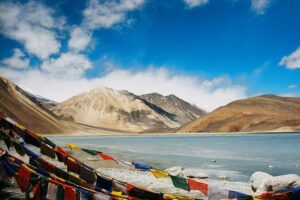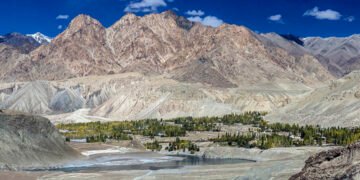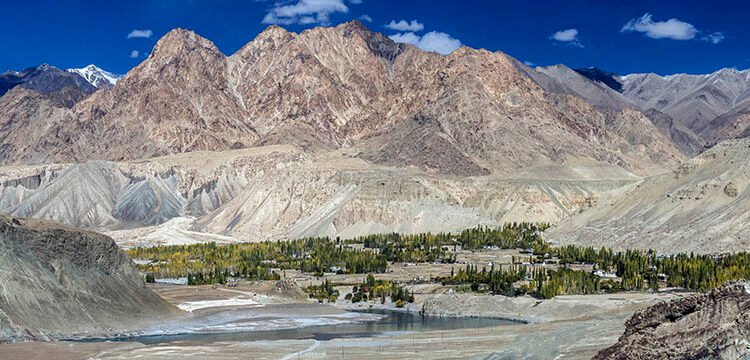Title: Enchanting Ladakh: Exploring Heights and Mysteries.
Introduction:
Nestled in the northernmost part of India, Ladakh is not merely a destination; it is a symphony of captivating landscapes, ancient monasteries, and a rich cultural tapestry that beckons the soul. Often referred to as the “Land of High Passes,” Ladakh opens its arms to those who seek solitude, adventure, and profound communion with nature at the very roof of the world.
Enchanting Landscapes:
**Himalayan Majesty:**
The embrace of the majestic Himalayas shapes Ladakh into a landscape of unparalleled beauty. Towering snow-capped peaks, deep valleys, and high-altitude deserts define the region’s topography. Among these wonders stands the enchanting Pangong Lake, surrounded by rugged mountains and renowned for its ever-changing colors—a jewel in Ladakh’s crown.
**Nubra Valley:**
The Nubra Valley, with its lush greenery, contrasting against the barren mountains, is a testament to Ladakh’s diverse geography. The valley is accessible via the world’s highest motorable pass, Khardung La, and offers a surreal experience with its sand dunes and the double-humped Bactrian camels.
**Magnetic Hill and Pangong Lake:**
The Magnetic Hill introduces an element of mystery, where vehicles seemingly defy gravity in an optical illusion. Meanwhile, Pangong Lake, stretching across the borders of India and China, attains an otherworldly status, immortalized by the Bollywood blockbuster “3 Idiots.

Ancient Monasteries:
**Thiksey Monastery:**
Perched on a hill, Thiksey Monastery is an architectural marvel that mirrors the Potala Palace in Lhasa, Tibet. The monastery houses a 15-meter-high statue of Maitreya (the Future Buddha) and provides panoramic views of the Indus Valley.
**Hemis Monastery:**
Known for its annual Hemis Festival, Hemis Monastery reigns as the largest and wealthiest in Ladakh. The vibrant summer celebration features colorful masked dances that draw pilgrims from far and wide, creating an atmosphere of cultural richness.
**Diskit Monastery:**
Dominating the Nubra Valley landscape, Diskit Monastery is renowned for its colossal statue of Maitreya Buddha, overlooking the Shyok River. Beyond its spiritual significance, the monastery offers panoramic views, making it a sanctuary for reflection and contemplation.
Cultural Harmony:
Ladakh emerged as a melting pot of cultures, shaped by the influences of Tibetan Buddhism and ancient Central Asian traditions. The region hosts a vibrant mix of Ladakhi Buddhists, Shia and Sunni Muslims, and a small Christian population, creating a harmonious blend of diverse traditions.
**Chadar Trek:**
For the adventure seeker, Ladakh presents the challenging Chadar Trek—a winter expedition across the frozen Zanskar River. This unique journey not only allows participants to witness the stark beauty of Ladakh’s winter landscapes but also offers a glimpse into the resilience of local life in the face of challenging conditions.
**Local Cuisine and Hospitality:**
Ladakhi cuisine, infused with Tibetan flavors, becomes a sensory delight with staples like thukpa, momos, and butter tea. The warm hospitality of the locals, evident in traditional homestays and interactions with indigenous communities, adds a deeply personal touch to the Ladakh experience.
Conclusion:
A sojourn in Ladakh transcends the conventional idea of a journey; it evolves into a spiritual and sensory exploration of high-altitude landscapes, ancient monastic traditions, and a harmonious convergence of cultures. Ladakh’s mystical allure, sculpted by awe-inspiring geography and cultural diversity, extends an invitation to travelers to venture into a realm where the mundane dissolves, and the soul intimately connects with the enchanting mystique of the “Land of High Passes.” In every word and landscape, Ladakh beckons explorers to delve deeper, experience more profoundly, and immerse themselves fully in the profound magic it generously bestows upon those who seek it.



















